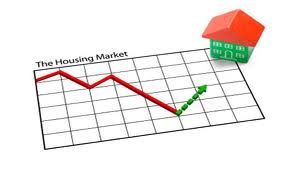Last quarter’s number was the lowest since 37,994 NoDs were recorded in fourth-quarter 2006. New foreclosure filings (NoDs) peaked in first-quarter 2009 at 135,431. DataQuick’s NoD statistics go back to 1992.
“Home values increased through most of 2012, and the rate of increase picked up toward the end of the year. That means fewer and fewer homeowners are underwater, where they owe more than their homes are worth. That in turn means they can sell and pay off the mortgage, or perhaps refinance at today’s low interest rates. This trend alone suggests we’ll see a continued decline in foreclosure rates this year. Another factor is the foreclosure-avoidance goals of various settlements between lenders and the government,” said John Walsh, DataQuick president.
The median price paid for a home last quarter was $300,000 in California, up 22.4 percent from a year ago and 32.2 percent off the median’s $227,000 bottom in first-quarter 2009, DataQuick reported.
Foreclosure resales accounted for 16.6 percent of all California resale activity last quarter, down from 20.0 percent the prior quarter and 33.6 percent a year ago. It peaked at 57.8 percent in the first quarter of 2009. Foreclosure resales — properties foreclosed on in the prior 12 months — varied significantly by county last quarter, from 5.0 percent in San Francisco County to 31.4 percent in Sutter County.
Short sales — transactions where the sale price fell short of what was owed on the property — made up an estimated 26.0 percent of statewide resale activity last quarter. That was down from an estimated 26.4 percent the prior quarter and up from 25.7 percent of all resales a year earlier. The estimated number (rather than percentage) of short sales last quarter rose 4.2 percent from a year earlier.
NoD filings fell in all home price categories last quarter. But mortgage defaults remained far more concentrated in California’s most affordable neighborhoods. Zip codes with fourth-quarter 2012 median sale prices below $200,000 collectively saw 5.5 NoDs filed for every 1,000 homes in those zip codes. The ratio was 3.5 NoDs filed per 1,000 homes for zip codes with $200,000 to $800,000 medians, while there were 1.3 NoDs filed per 1,000 homes for the group of zips with medians above $800,000.
Most of the loans going into default are still from the 2005-2007 period: The median origination quarter for defaulted loans is still third-quarter 2006. That has been the case for three years, indicating that weak underwriting standards peaked then.
The most active “beneficiaries” in the formal foreclosure process last quarter were Wells Fargo (6,611), JP Morgan Chase (4,275) and Bank of America (2,005).
The trustees who pursued the highest number of defaults last quarter were NDex West (mostly for Wells Fargo), Cal-Western Reconveyance (also Wells Fargo) and Quality Loan Service Corp (Bank of America).
On primary mortgages, California homeowners were a median eight months behind on their payments when the lender filed the Notice of Default. The borrowers owed a median $14,364 on a median $308,885 mortgage.
On home equity loans and lines of credit in default, borrowers owed a median $4,693 on a median $77,187 credit line. The amount of the credit line that was actually in use cannot be determined from public records.
San Diego-based DataQuick monitors real estate activity nationwide and provides information to consumers, educational institutions, public agencies, lending institutions, title companies and industry analysts. Notices of Default are recorded at county recorders offices and mark the first step of the formal foreclosure process.
Although 38,212 default notices were filed last quarter, they involved 37,343 homes because some borrowers were in default on multiple loans (e.g. a primary mortgage and a line of credit).
Of the state’s larger counties, mortgages were least likely to go into default in San Mateo, Santa Clara and Marin counties. The probability was highest in Yuba, Madera and Tulare counties.

